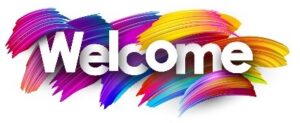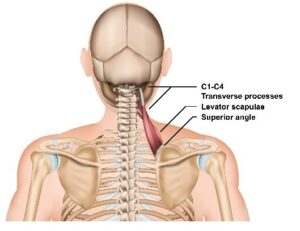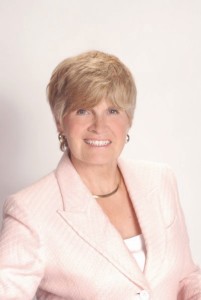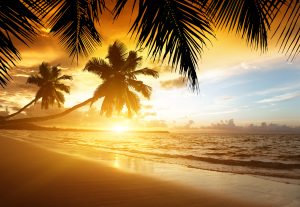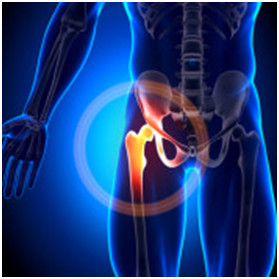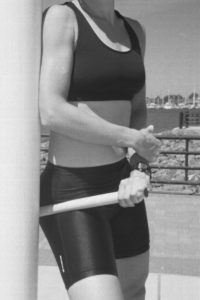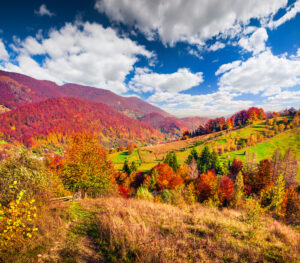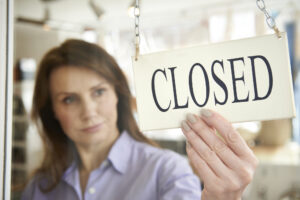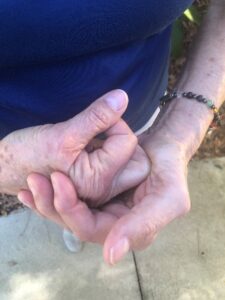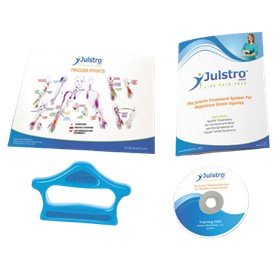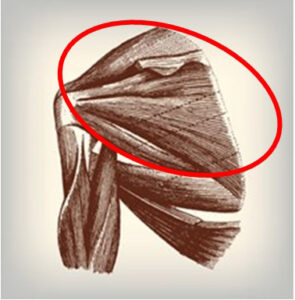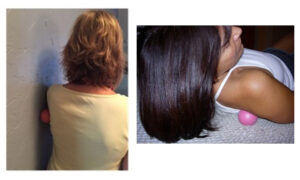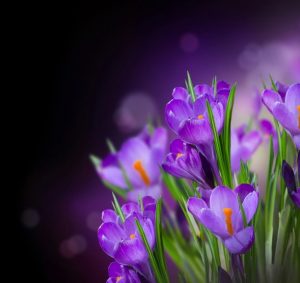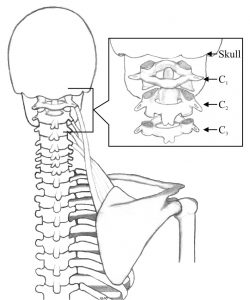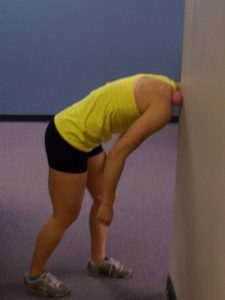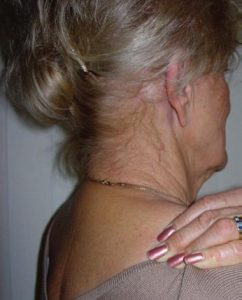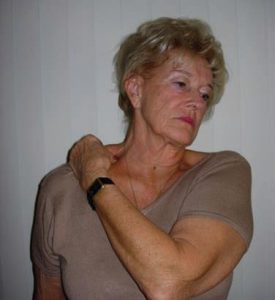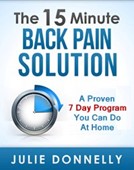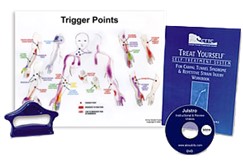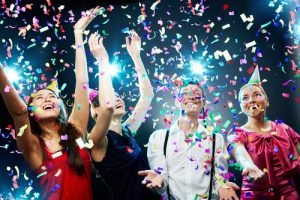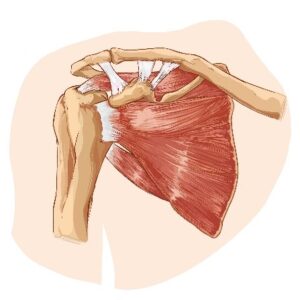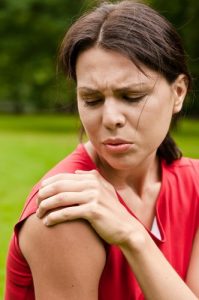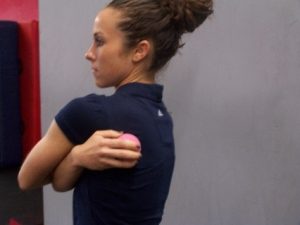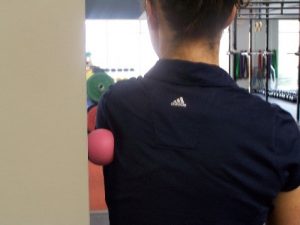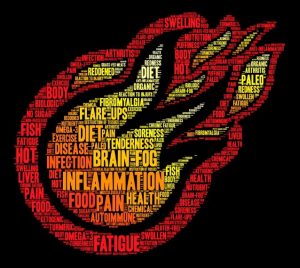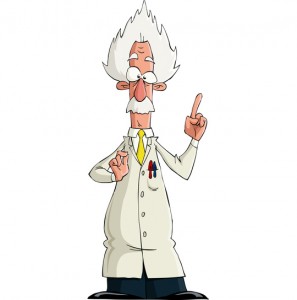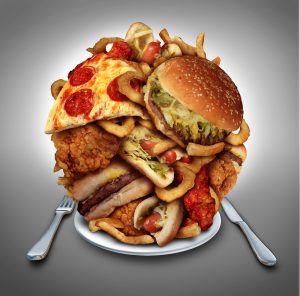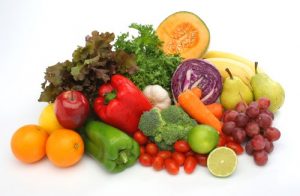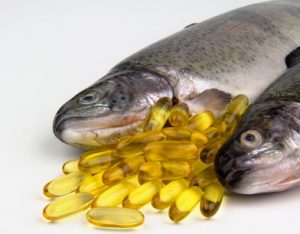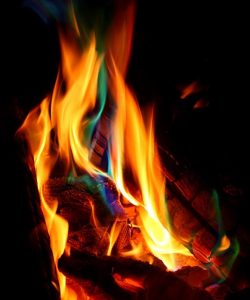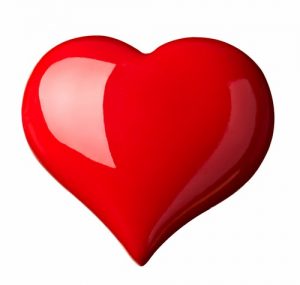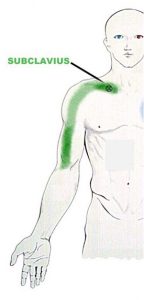What Causes Shin Splints?
Author: Julie Donnelly, LMT – The Pain Relief Expert
Editor: Dr. Steve Chaney
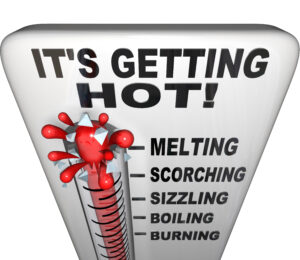 July is here and Florida is hot! The “Snowbirds” have gone north to the cooler weather (a goal of mine!) and life is moving in the slow lane.
July is here and Florida is hot! The “Snowbirds” have gone north to the cooler weather (a goal of mine!) and life is moving in the slow lane.
For me, the slow down time is giving me the opportunity to work on some big projects such as my self-treatment videos and my information videos explaining all kinds of info about muscles and pain. In future months my newsletter will have one of those explanatory videos, and 1-2 self-treatment videos that relate to the topic being discussed.
This month’s topic is on Shin Splints. I hope you enjoy all the outdoor activities that go with the month of July. This newsletter will help you deal with the shin splints that go along with some of those outdoor activities.
What Are Shin Splints?
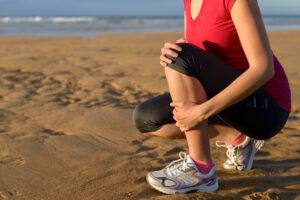 If you are a runner, play any sport that involves a lot of running, or if you drive for long distances, you may have experienced pain &/or burning along the front of your leg, next to your shin bone. This pain is commonly called Shin Splints.
If you are a runner, play any sport that involves a lot of running, or if you drive for long distances, you may have experienced pain &/or burning along the front of your leg, next to your shin bone. This pain is commonly called Shin Splints.
I’ve searched all through the internet and while I’ve found LOTS of articles about the cause of shin splints, the definition of shin splints, and treatments such as rest, ice, various meds, etc., I’ve never found anything that resembles the self-treatment I’ve been teaching for years and that is in each of my books.
I’m going to share that self-treatment with you. A plus is the treatment for the muscle that causes shin splints is also one of the main muscles that cause plantar fasciitis. So, you may get some pain relief that you weren’t even expecting.
What Causes Shin Splints?
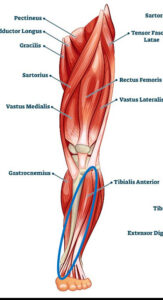 The Tibialis Anterior muscle cause shin splints. The tibialis anterior muscle runs along the outside of your shin bone (the tibia bone), merges into a tendon at your lower leg, crosses over your ankle and then inserts into your arch. When it contracts, it lifts your foot and rolls it toward the outside. Because of these attachments, it is also a key muscle in a sprained ankle and in plantar fasciitis, but these are topics for different newsletters.
The Tibialis Anterior muscle cause shin splints. The tibialis anterior muscle runs along the outside of your shin bone (the tibia bone), merges into a tendon at your lower leg, crosses over your ankle and then inserts into your arch. When it contracts, it lifts your foot and rolls it toward the outside. Because of these attachments, it is also a key muscle in a sprained ankle and in plantar fasciitis, but these are topics for different newsletters.
The muscle fibers are directly on your shin bone, so when they are tightening due to a repetitive strain, such as running or pressing down on the gas pedal while driving long distances, they start to tear off the bone. You can visualize this by considering how you rip meat off a bone while eating a steak or spareribs.
As the muscle is slowly tearing away from the bone you feel pain along the entire length of the bone, and it really hurts! Fortunately, it’s easy to release the tension in the muscle. Plus, as you’re doing the self-treatment I’m showing you, you are pressing the fibers back on to the bone, so it stops them from ripping away completely.
Relief From Shin Splints
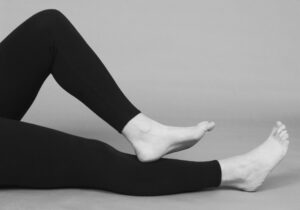 You can get immediate relief from shin splint pain by treating your tibialis anterior muscle.
You can get immediate relief from shin splint pain by treating your tibialis anterior muscle.
Begin to warm up the muscle by putting your leg straight out and running your opposite heel down the length of the muscle.
Right at the point where the picture is showing the model’s heel on her leg is the point where you’ll find the most sensitive trigger point.
Continue from just below your knee to just above your ankle joint.
Next kneel down as shown in the picture on the right, placing the ball at the top of the muscle and right next to your 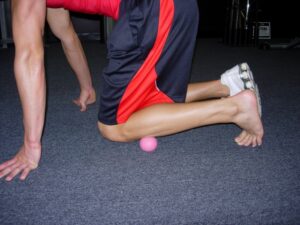 shin bone.
shin bone.
Notice the way his toes are bent. This will help prevent your arch from feeling like it’s going to cramp as the muscle pulls on the insertion point
Begin to move your leg so the ball is rolling down toward your ankle. Stop when you find a tight point.
When you get to your ankle you can roll back up toward your knee again. Ultimately it won’t hurt, but if it’s especially painful in the beginning just lighten up on the pressure. You may even need to lift your leg off the ball at first which will allow blood to come into the muscle fiber and help lessen the tension.
This technique has helped so many people over the years, I know it will help you too!
Snowbirds And Clients Around The World – Zoom Consultations Are Available
 I’ve successfully worked with people around the world for many years.
I’ve successfully worked with people around the world for many years.
I also love working with Snowbirds who are in Sarasota all winter, and then head north when it gets hot here. It’s so nice to see you, and to help you stop aches and pains.
The way we work together is simple:
- You go to https://julstromethod.com/product/one-on-one-zoom-consultation/ and order a private consultation.
- You send me an email explaining what is wrong, where you feel the pain, what you’ve done to treat it so far, etc., etc. Don’t tell me about medications because that is far out of my scope of practice so I can’t give any advice about them.
- We meet on Zoom and work together to find and eliminate the source of your pain.
- You receive the Zoom recording so you can watch it again later to refresh your memory about the treatments.
All this for only $147.
Have a beautiful summer!
Wishing you well,
Julie Donnelly
www.FlexibleAthlete.com
These statements have not been evaluated by the Food and Drug Administration. This information is not intended to diagnose, treat, cure, or prevent any disease.
About The Author
Julie Donnelly has been a licensed massage therapist since 1989, specializing in the treatment of chronic pain and sports injuries. The author of several books including Treat Yourself to Pain-Free Living, The Pain-Free Athlete, and The 15 Minute Back Pain Solution.
Julie has also developed a proven self-treatment program for the symptoms of carpal tunnel syndrome.
She has a therapy practice in Sarasota, Florida, and she travels around the USA to teach massage and physical therapists how to do the Julstro Method, and she also teaches self-treatment clinics to anyone interested in taking charge of their own health and flexibility.
She may be reached at her office: 919-886-1861, or through her website: www.FlexibleAthlete.com
About The Editor
Dr. Chaney has a BS in Chemistry from Duke University and a PhD in Biochemistry from UCLA. He is Professor Emeritus from the University of North Carolina where he taught biochemistry and nutrition to medical and dental students for 40 years.
Dr. Chaney won numerous teaching awards at UNC, including the Academy of Educators “Excellence in Teaching Lifetime Achievement Award”. Dr Chaney also ran an active cancer research program at UNC and published over 100 scientific articles and reviews in peer-reviewed scientific journals. In addition, he authored two chapters on nutrition in one of the leading biochemistry text books for medical students.
Since retiring from the University of North Carolina, he has been writing a weekly health blog called “Health Tips From the Professor”. He has also written two best-selling books, “Slaying the Food Myths” and “Slaying the Supplement Myths”. And most recently he has created an online lifestyle change course, “Create Your Personal Health Zone”. For more information visit https://chaneyhealth.com.
For the past 45 years Dr. Chaney and his wife Suzanne have been helping people improve their health holistically through a combination of good diet, exercise, weight control and appropriate supplementation.

